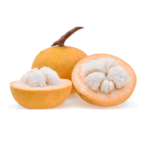Umami—the elusive “fifth taste”—is the flavor behind some of the world’s most addictive, soul-satisfying meals, from dashi broth to parmesan-dusted veggies and perfectly ripe tomatoes, if you are new to the umami word read up our introductory article on umami. But what really makes umami so irresistible, and could it offer health benefits beyond flavor? Let’s dig deep into the science, psychology, and practical cooking tips behind umami’s “addictive” appeal, and discover how using it wisely in healthy meals can transform your daily plate—and your relationship with food.
What Exactly Is Umami?
Umami is a Japanese word meaning “pleasant savory taste.” While sweet, sour, salty, and bitter had long been recognized as basic tastes, scientist Kikunae Ikeda discovered umami in 1908 when he isolated the amino acid glutamate from kombu seaweed—the secret behind Japan’s dashi broth.
Umami is mostly detected thanks to two classes of molecules:
- Glutamates: Amino acids found naturally in foods like tomatoes, cheeses, and meats.
- Ribonucleotides: Building blocks of DNA and RNA found in mushrooms, dried fish, shellfish, and fermented foods.
Individually, each creates subtle flavor; together, they set off a “multiplier effect,” making foods taste exponentially more delicious.
The Biology of Umami: Why Our Tongues Love It
The science of taste is rooted in survival. Sweetness signals energy, bitterness warns of poisons, and umami tells our bodies we’ve hit a protein jackpot—vital for growth and repair. In the early 2000s, scientists discovered dedicated umami taste receptors (T1R1 and T1R3) on the tongue, confirming umami as a base taste.
These receptors:
- Detect glutamate and ribonucleotides together, triggering maximum pleasure and satiety.
- Send strong signals to the brain’s reward and appetite centers, releasing dopamine and other “feel-good” neurotransmitters.
No wonder deeply savory foods feel so comforting and “crave-able”—our bodies are hardwired to seek them out.
Umami’s “Addictive” Pull: Hedonic vs. Healthy
Is umami really addictive? While umami-rich foods don’t spark physical dependence like drugs, they do activate the brain’s reward pathways. In scientific terms, this is known as “hedonic eating”—a drive to consume foods not just for energy, but for pleasure.
- Liking: How enjoyable a food tastes.
- Wanting: How strongly we crave it.
Umami foods—and especially those combining glutamates and ribonucleotides—score high on both, making them extremely “complete” and satisfying.
- This explains why people relish parmesan on pasta, anchovies in Caesar salad, or umami-packed broths.
- Unlike sugar, umami doesn’t push for constant overconsumption. In fact, it can promote greater satisfaction with less food—a crucial point for health-focused eaters.
Umami: The Satiety Signal in Healthy Meals
One of umami’s remarkable superpowers is that, when used in balanced meals, it enhances satisfaction and fullness without excess calories. Scientific studies with soups, broths, and veggie dishes enriched with umami (e.g., MSG + IMP) show.
- Short-term appetite stimulation: You’re eager to start eating.
- Rapid satiety and pleasure: Subjects consumed less at subsequent meals—even though they felt more satisfied, not deprived.
A 2014 study found that people who started their meal with a low-calorie, umami-rich soup ate less pasta afterward and still reported feeling full and happy with their meal.
This effect is particularly valuable for those managing portions or seeking to lose weight, as umami can make light, plant-centric meals feel as satisfying as richer ones.
Umami’s Role in Healthy Eating Behaviors
Umami doesn’t just make food “tasty.” It encourages healthier choices, making nutritious options—veggies, legumes—more appealing. According to nutrition experts:
- Umami-rich ingredients like tomatoes, mushrooms, fermented soy, and aged cheese can transform the entire taste profile of healthy foods.
- Adding umami to vegetables can mask bitterness, reduce the need for added fat or salt, and amplify enjoyment, leading to better adherence to healthy eating patterns.
Dietitians even recommend drinking umami-rich broths before meals to help curb cravings and develop mindfulness around food.
Beneficial Effects Beyond Taste: Health and Longevity
Scientific evidence now links umami to several health advantages:
- Reduced sodium and fat intake: Umami amplifies flavor, so less salt and oil are needed to make foods taste great, supporting heart health.
- Improved protein absorption and digestion: Umami stimulates salivation and digestive enzyme release, aiding breakdown of proteins.
- Preserving muscle and cognitive health in aging: Umami encourages elderly individuals to eat more and maintain strength—especially vital for older adults at risk of undernourishment.
Umami Ingredients: The Kitchen’s Secret Weapons
Want to harness umami’s power? Stock your kitchen with naturally umami-rich foods:
- Aged cheeses: Parmesan, cheddar, gouda
- Fermented foods: Soy sauce, miso, natto, kimchi
- Mushrooms: Shiitake, porcini, morels
- Tomatoes: Especially sun-dried or roasted
- Sea vegetables: Kombu, nori
- Broths and stocks: Chicken, beef, vegetable—particularly when simmered with bones and aromatics
- Fish sauce and anchovies: Tiny amounts go a long way in savory dishes
Pairing these ingredients often unlocks an “umami synergy,” making everyday meals feel restaurant-worthy.
Cooking Tips and Recipe Hacks for Maximum Umami
Transform ordinary healthy meals into crave-worthy dishes:
- Roast veggies: Roasting concentrates glutamate, boosting natural umami.
- Mix mushrooms into meatloaf, burger patties, or pasta sauces.
- Sprinkle aged cheese over veggie-based soups, salads, or casseroles.
- A splash of soy sauce or fish sauce adds depth to stir-fries and grain bowls.
- Try tomato paste or sun-dried tomatoes as flavor boosters in greens, stews, or lean proteins.
- Use “double umami” combos: tomatoes and cheese; mushrooms and anchovies; miso and nori.
- For vegan kitchens, nutritional yeast is an umami MVP—like plant-based Parmesan!
What About MSG? “Natural vs. Synthetic” Umami in Context
Monosodium glutamate (MSG), the isolated glutamate derived from fermented starch or sugar, gets controversial press. Yet science shows that MSG is chemically identical to glutamate found in tomatoes or cheese, and poses no danger for most people in normal dietary amounts.
- MSG can be a safe and affordable way to enhance savory satisfaction and help reduce sodium in home-cooked dishes.
- Sensitive individuals can opt for whole-food sources—miso, mushrooms, tomatoes, and aged cheese—if they wish to avoid processed additives.
Umami’s Global Influence: Tradition Meets Tech
Virtually every cuisine leverages umami:
- Japanese: Dashi broth (kombu + bonito)
- Italian: Parmesan, tomatoes, cured meats
- French: Mushrooms, olives, slow-simmered stocks
- Thai and Vietnamese: Fish sauce, fermented pastes, dried shrimp
- West African: Fermented locust beans, smoked fish
Recent food tech innovations look to natural fermentation, drying, and aging to boost umami safely in packaged health foods, bringing tradition full circle.
The Bottom Line: Delicious Health, Powered by Umami
Umami’s unique taste isn’t just addictive—it’s a nutritional ally. By tapping into umami’s culinary chemistry, you can make healthy meals deeply enjoyable and satisfying, motivating yourself, family, and friends to choose whole, nourishing ingredients every day. That’s the science (and the pleasure) behind why people all over the globe keep coming back for more bite after bite.
Did you find this article helpful? Support us by following us on our social media for more content on natural health and wellness:: Youtube, Instagram, Facebook, Pinterest, Twitter (X)








